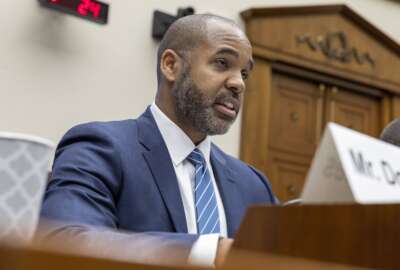
Insight by Tableau
Three trends driving adoption of data, analytics to strengthen federal HR
Gerard Valerio, solution engineering director for Federal Civilian at Tableau, said there are three trends that are driving this push to find data-driven...
This content is sponsored by Tableau.
Building on the priorities outlined in the President’s Management Agenda, the Biden administration in November released the first governmentwide diversity, equity, inclusion and accessibility strategy in a decade. The strategy calls on agencies to utilize tools developed under the Federal Data Strategy and the Evidence Act, which mandated chief data officers and chief evaluation officers at every agency to implement a “data-driven approach to DEIA.”
“The use of data is transforming society, business and the economy. If the federal government does not maintain its role as a preeminent supplier and sophisticated user of data, it will no longer be able to fulfill the trust placed in it by the American People,” the PMA said.
The challenge here for federal agencies is gathering the data they need and learning how to leverage it. For example, the Marine Corps’ Talent Management 2030 report states that the service “is awash in personnel data, yet does very little to analyze the data we do collect in meaningful ways. When it comes to data analytics, we have barely scratched the surface of the possible.”
Gerard Valerio, solution engineering director for Federal Civilian at Tableau, said there are three trends that are driving this push to find data-driven solutions to longstanding federal human capital challenges. The first is data literacy.
“The federal data strategy is helping place importance and a focus for agencies on data literacy and data proficiency,” Valerio said. “These capabilities can change how data is used, fostering data culture. And this is something that’s also at the heart of Tableau.”
The second trend is improving employee experience, which includes harnessing the business value of DEIA. The third trend is improving recruitment, retention and upskilling. A significant portion of the federal workforce is at or rapidly approaching retirement age, while recruitment among younger generations is lagging. That results in a loss of institutional knowledge, in addition to a technological skills gap.
A portion of the workforce use cases will center around optimizing recruiting and hiring; improving the employee experience; fostering diversity, equity and inclusion; enhancing retention and training; and then matching program resources and results,” Valerio said. “Workforce analytics can help with each of these objectives within the employee lifecycle.”
So how can federal agencies start putting their data to use to overcome these challenges, modernize their human capital management and meet the new goals in the PMA?
It starts with gathering the right kind of data. Surveys like the Partnership for Public Service’s Best Places to Work survey or the Federal Employee Viewpoint Survey are great places to start, and provide agencies with data around employee engagement. That kind of data provides a holistic view that can help identify issues with employee engagement, which can then be turned into opportunities to improve hiring and retention, two issues federal agencies have traditionally struggled with while competing with the private sector for talent.
“At Tableau, we use employee surveys quite a bit,” said Valerio. “When it comes to enhancing retention and training, you can use analytics to establish what the benchmarks are for retaining workers and understanding what skills are potentially at risk. Or what type of knowledge capital could be at risk with the loss of employees that are looking to retire. And then what are the things that you can also otherwise do to measure or drive retention?”
That also applies to DEIA initiatives: These types of analytics dashboards can be used to benchmark where agencies stand in comparison to the private sector. They can be used to hold agencies accountable, and identify areas for improvement.
And those analytics can scale across various levels of the organization. A chief human capital officer may be looking to establish these benchmarks and track progress. A recruiting office can use them to identify new or underutilized sources of talent. And a hiring manager can use them to identify the truly qualified applicants and cultivate more diverse talent pipelines.
Incorporating artificial intelligence and machine learning into this process makes it easier to tease out those trends.
“For example, Tableau CRM can analyze your data and say, we see a propensity or an increasing trend, for example, in attrition in women in a certain age group. And therefore, you may want to explore why that is happening,” Valerio said. “There could be a variety of reasons for that: limited upward mobility, retiring early, or employee dissatisfaction. That’s usually where AI/ML could suggest something to focus on. Then you can use things like a survey or deep dive into the data to see what it informs us.”
Better leveraging data for HR operations and decisions, fostering a data culture and enabling staff with analytics capabilities are essential to accomplishing agency missions today and in the future.
Copyright © 2025 Federal News Network. All rights reserved. This website is not intended for users located within the European Economic Area.
Related Stories




